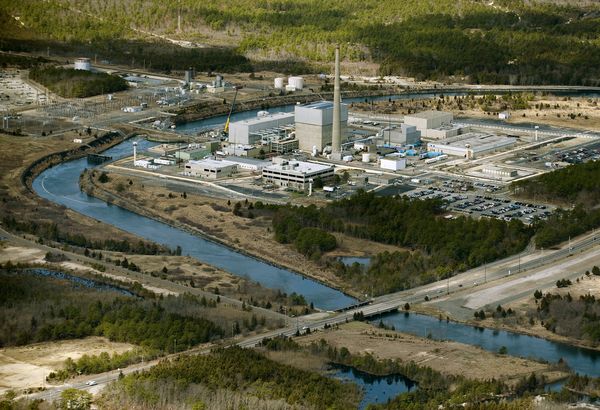This could get ugly in a hurry. Oyster Creek is the
same design, but even older than Fukushima, and acccording to Reuters, just 6 more inches of water will completely
submerge the cooling pump.
(Reuters) - Exelon Corp declared an "alert" at its
New Jersey Oyster Creek nuclear power plant due to a record storm surge, the
Nuclear Regulatory Commission said, warning that a further water rise could
force the country's oldest working plant to use emergency water supplies to
cool spent uranium fuel rods.
The alert came after water levels at the plant rose by more
than 6.5 feet, potentially affecting the pumps that circulate water through the
plant, an NRC spokesman said late on Monday. A further rise to 7
feet could submerge the service water pump motor that is used to cool the
water in the spent fuel pool.
From National Geographic:
In the wake of Fukushima, the U.S. nuclear industry has
pledged to bring additional backup equipment such as generators, pumps, hoses,
and batteries to keep plants operating in case of loss of power or water, but
that deployment is still under way. Some critics have raised
concerns about the safety of spent fuel at Oyster Creek and other
nuclear plants, noting that the cooling pools where it is stored are not
required to have backup power. Spent fuel rods are still radioactive
and continue to generate significant heat for decades. Without cooling,
the pools would boil away, leaving the fuel vulnerable to damage and to causing
a radioactive release. Exelon says it has "numerous, redundant
backup cooling systems."
However, as discussed below by nuclear expert Arnie
Gundersen, there is NO backup diesel generator for the spent fuel pool at
Oyster Creek.
---
Don't skip this. Arne Gunderson discusses Oyster
Creek:
Interview runs 5 minutes. Gunderson on Democracy Now yesterday:
"There is NO backup generator for the spent fuel pool
at Oyster Creek."
"The biggest problem, as I see it right now, is the
Oyster Creek plant. Oyster Creek is the same design, but even older than
Fukushima Daiichi unit 1. It’s in a refueling outage. That means
that all the nuclear fuel is not in the nuclear reactor, but it’s over in the
spent fuel pool. And in that condition, there’s no backup power for the
spent fuel pools. So, if Oyster Creek were to lose its offsite power —
and, frankly, that’s really likely — there would be no way cool that nuclear
fuel that’s in the fuel pool until they get the power reestablished. The
most important lesson we can take out of the Fukushima Daiichi incident,
especially with Hurricane Sandy, is that we can’t expect to cool these fueling
pools."

Thanks sharing
ReplyDelete